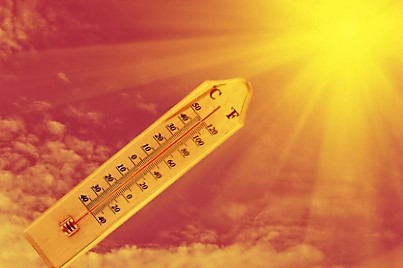A few ways to keep crews safe from high summer temperatures

Keeping your crews safe goes beyond safety training and harnesses. With the summer upon us, the heat can be fatal if safety precautions are not in place. Not to mention, failing to protect employees working in extreme heat is an OSHA violation.
Earlier this month, OSHA published a news release stating that the U.S. Department of Labor cited a Georgia Water Services Company after one of their employees suffered a heat-related injury on a jobsite in Key West, Florida. According to the release, “an employee suffered heat exhaustion and was hospitalized after working in direct sunlight and wearing required protective clothing during welding and fabrication work at a Key West, Florida, worksite. On the day of the hospitalization, the heat index ranged between 83 and 88 degrees. OSHA cited the employer for failing to protect workers exposed to outdoor heat hazards, and failing to report a hospitalization within 24 hours, as required.” Now the employer faces $21,311 in penalties, including the maximum penalty allowed by law for the heat-related violation.
For those of us who are born and raised in the South, often we don’t take the heat seriously enough, and while that may be fine for leisure activities, it is a major liability that requires attention as a construction professional. In order to beat the heat this summer, here are a few things you can do for your crews to keep them safe when working outdoors:
- Water, Rest and Shade – While they seem obvious, water, rest and shade are three concepts that should be integrated into your daily routine and safety practices. It’s quite simple… As an employer, it is crucial that you provide your crews with plenty of water, appropriate breaks and rest as well as shaded areas on the jobsite.
- Provide Time to Acclimate – New and/or returning workers should be given a chance to gradually increase their workloads and take more frequent breaks as they become accustomed to and build a tolerance for working in the heat.
- Have a Plan – All members of your crews should be aware of emergency protocol, as well as prevention and safety practices related to high heat conditions.
- Monitor – Along with foreman and site supervisors, your crews should be monitoring themselves and each other for any signs of heat exhaustion or illness. If they aren’t already aware of the signs, now is the time to inform them of what they should look for and how to handle it. To assist, here is a list of common signs and symptoms.
OSHA conducts training and outreach on heat-related workplace hazards every spring and summer. Information on establishing a heat illness prevention program, a video on protecting workers from heat illness, and resources with other suggested best practices are available on OSHA’s heat illness prevention page.
To receive the latest updates on construction business and marketing tips, stay connected with the HBW Blog. To gain access to the latest reports on construction permit data in Florida, Texas, Georgia, Alabama and Oklahoma, contact HBW.
